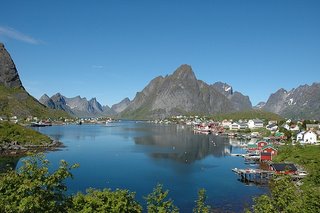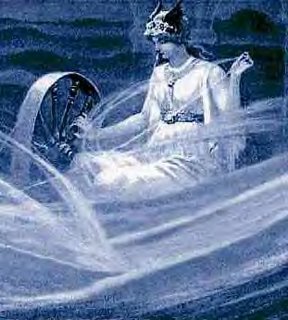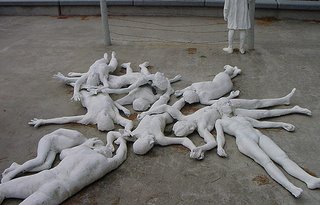Gods of Poetry (part two): Saga

The first part to this series is here: Gods of Poetry (part one). In that post, the poetry gods Bragi, Erato, Aengus, and Leanan Sidhe are touched on. Here in part two, we have Saga. When complete or further along, I will make an index, and place it at the bottom of each part, so that navigation is easy.
We know of the Norse goddess Saga, because the following verse appears in Poetic Edda, where the dwellings or halls are itemized:
~~~~
Sökkvabekk the fourth is named
oe’r which
the gelid waves resound;
Odin and Saga there,
joyful each day,
from golden beakers quaff.
~~~~

I will be going to Norway in August, and from Oslo up into the Arctic Circle to Lofoten. The waves around here in New England can get quite gelid at certain times of the years, so cold cold colder there.
Sökkvabekk is a sinking floor, or the sunken hall. The fjords of Norway can easily bring with them the idea of great halls by the ocean, to be thought of as representative of a quintessential sunken hall. And there, each day, come Odin and Saga, to drink from golden beakers.
Saga is thought to be Odin's daughter, and here we have that offspring lineage to the great male god, that we have with Bragi in relation to Odin, Erato in relation to Zeus, and Aengus in relation to Dagda. We Christians know how this can work, how close this relationship is, the "aspect" the offspring brings, the Son in relation to the Father. Being a mortal inspired by such a godhead, indicates a near-direct line to the greatest most awesome wonder and being, something a human cannot behold or comprehend. So the offspring is the most powerful line humanly tolerable and therefore possible. This, it seems, is only one part of why Saga has become a god of poetry.
 She may also be Odin's wife, Frigg, enjoying a daily interlude with her husband. Frigg's Hall, the Ocean Hall, is much like the Sunken Hall of Saga, with the gelid waves. Frigg, associated with water, weaves the clouds, for instance.
She may also be Odin's wife, Frigg, enjoying a daily interlude with her husband. Frigg's Hall, the Ocean Hall, is much like the Sunken Hall of Saga, with the gelid waves. Frigg, associated with water, weaves the clouds, for instance. I am more apt to think that Saga is differently named, because she has a different aspect. And maybe this aspect, is better thought of in an analogy, that Saga is to Frigg the Mother, as Jesus is to God the Father. The resulting Daughter/Father relationship on the sinking floor, becomes a remarkable way of meditating on how a too-awesomely powerful, incredibly-high god may find joy in Earth, and why such godlike things as poetry would come presented to humans. Another way to look at the analogy is that Saga the Daughter is to an accessible fjord, as Frigg the Mother is to the vast ocean.
 The hall floor is sinking, an indication that through time, the relation between Odin and Saga, will come very close to Earth, or very much closer, such that such high inspiration will not seem as remote as it does in our current everyday existence. A sort of prophesy of an aspect of heaven, if not on, at least very near our Earth. This was where the Modern movement was headed, before being derailed by the horrifics of such events as the Holocaust last century, the escalation instead of the recession of the terrible, what led into our Postmodern times, if that is where we still come from artistically.
The hall floor is sinking, an indication that through time, the relation between Odin and Saga, will come very close to Earth, or very much closer, such that such high inspiration will not seem as remote as it does in our current everyday existence. A sort of prophesy of an aspect of heaven, if not on, at least very near our Earth. This was where the Modern movement was headed, before being derailed by the horrifics of such events as the Holocaust last century, the escalation instead of the recession of the terrible, what led into our Postmodern times, if that is where we still come from artistically.For some, Saga, "the seeing one," is considered more a goddess of history, as the quaff would be water, an indication of the waters of memory, circumstance, and the flow of life. Certainly from Frigg we have the rain of life. But, we have joy involved also, and this is not such a common aspect of the study of history that it would be mentioned in such a short telling verse. This is more an indication that the quaff could be spiked or not even have gerid water in it, that what may be bestowed or a catalyst to joy, is something like the mead, or maybe wine, of poetry. The gold beaker indicates usual tableware for the gods, but carries mystic, religious, high-rite significance to us here on Earth.
Shoring up Saga as a god of history, the quaff may indeed be thought of as having some water in it, or of all of it being water. The waters of the gods are the essences of life on Earth, and may represent truth, the truth being told. The gerid waves are certainly representative of time, the ebb and flows of history, Saga's name as coming from the same root as the literary saga. We have two aspects of Saga, god of poetry and history, plus the idealistic merging of these two toward Truth.

And yet, in support of the quaff being other or more than water, with such cold conditions of Sunken Hall, a quaff of some warmth would be in order. When we think of Saga, and identify with her, taking her quaff in, we are sharing the everyday joy of what is most high in Earthly existence. This identity makes her a very good inspiration for all women, not only heterosexual. All women poets are daughters. And yet all male poets too, or at least the Christian ones, should have no problem with Saga in this setting as an inspirational ideal, since we are all aspects of the Bride of the Christ.
0 Comments:
Post a Comment
<< Home